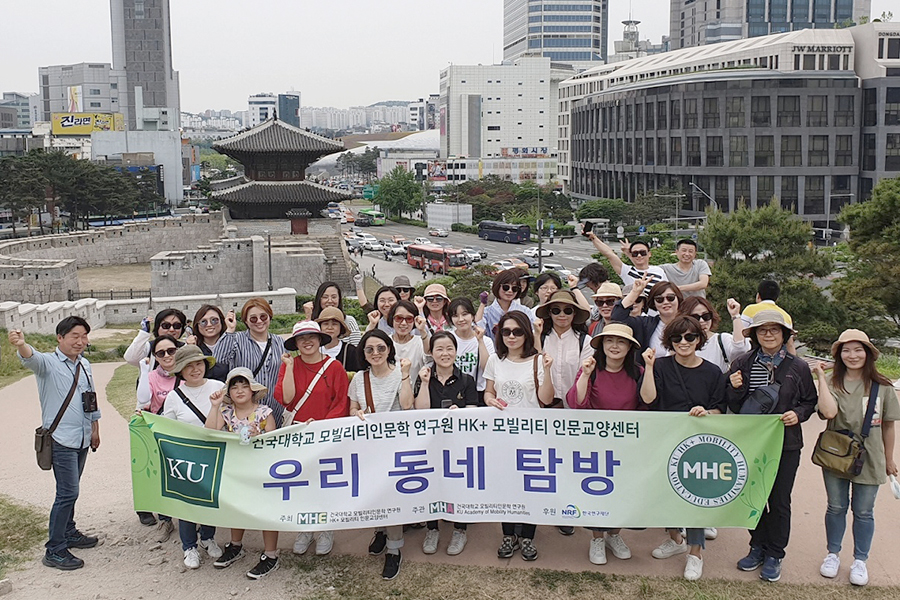
Exploring Our Neighborhood is a local cultural commentary tour that aims to familiarize the general public with the meaning of mobility by exploring the culture of the community in which the local community is based. This is a tour of the local culture through local culture visits through mobility, in order to help them to recognize newly the values of the humanities.
On May 17 (Fri), 2019, we visited the 2nd area of our visit from 10 am to Noon under the theme of “Castle Wall Tracking” under the direction of Chan-woong, Lim, Cultural Heritage Commentary. In the course of the Hanyang castle of Naksan – Ewha Village – Hanyang Castle Museum, it was time to walk along the old city road along Heunginjimon.
Naksan (124m) is the modest-high mountain in the middle of Seoul. Naksan as the lowest mountain among the four inner mountains – including Namsan, Inwangsan, and Bukaksan – in Seoul, Naksan used to have a cow farm that supplies milk to the court. It was called the Tharac (meaning milk) mountain. It is said that it was also called the Mount of the Camel because it rises like a camel’s back.
Ehwa Village, located below Naksan, is a place where housed built in the Japanese colonial era were gathered and was laster reborn as a beautiful art village through the alleyway murals project conducted in 2006. It is a place where memories of old alleys and histories of neighborhoods can be felt.
On January 21, 1963, Heunginjimun designated as National Treasure No. 1, is one of the eight gates of the Seoul Metropolitan city. It is generally called Dongdaemun on the side of the east in Seoul. It was built in 1869 (Gojong 6). Unusually, all of the Four Major Gates in Seoul are three letters, four of which are called Heunginjimun, and because the topography of Seoul is high in the west and low in the east, the Dongdaemun was the weakest in the military. This is why Heunginjimun got to have four letters and why one more fortress was built on the outside of Dongdaemun.
Through this visit, we followed the rituals of castle wall tracking that the ancestors used to walk along the city once a year. It was a precious time to read the thoughts of the old people and to feel the footsteps by walking the Hanyang road. On May 24 (Fri), a thrid visit to our neighborhood will be held under the theme of ‘King’s Car in Changdeokgung Palace.’


